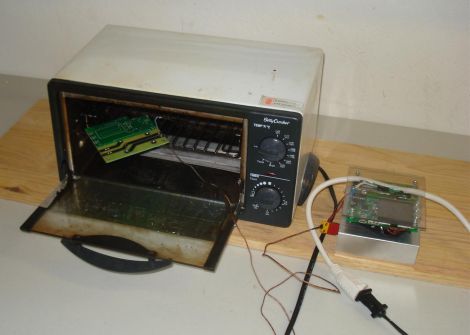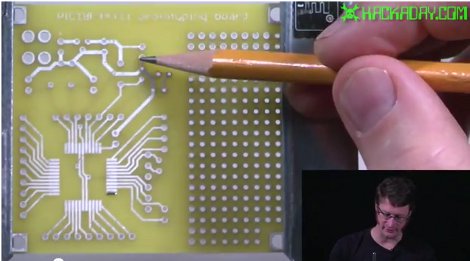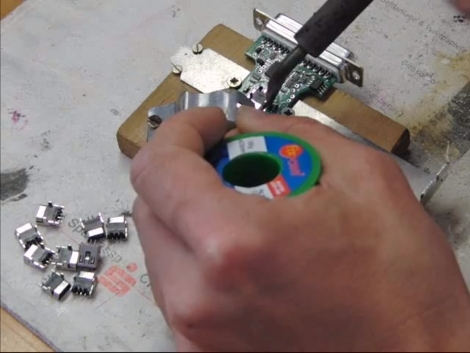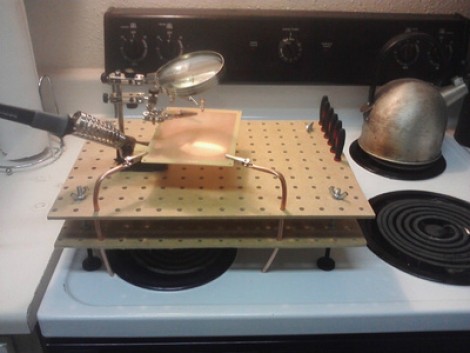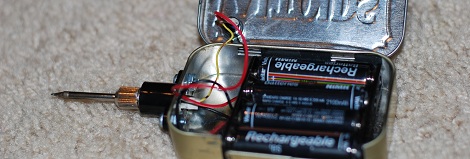
When it’s time to get started on a project and put our irons in the fire, we usually reach for a nice Weller or Hakko soldering iron. Unfortunately, that isn’t possible when we’re soldering something away from a wall outlet. Portable soldering irons usually range from slightly to completely terrible, and [Adam] thought he could do better. He put together an Instructable for a portable battery-powered soldering iron that’s extremely easy to build.
[Adam]’s project mounts a standard Radio Shack soldering iron tip in an E-10 flashlight bulb socket. Power is provided by 6 Volts of AA batteries, with a small switch added for the obvious safety concerns. Although [Adam] could have added a small project box, he chose to build his entire project around a piece of wood. This is an excellent choice in our humble opinion; wood doesn’t melt, has very low thermal conductivity, and anyone using this iron should be smart enough to turn it off if the handle starts smoking.
While this isn’t the best possible portable soldering iron (we’re partial to the disposable-lighter-fueled torches with a soldering iron attachment), it’s much better than the ColdHeat soldering iron that received consistently bad reviews.
Edit: [Adam] updated his build to be a little safer after this story was posted. We changed the original title pic to reflect this; here’s the old one.






